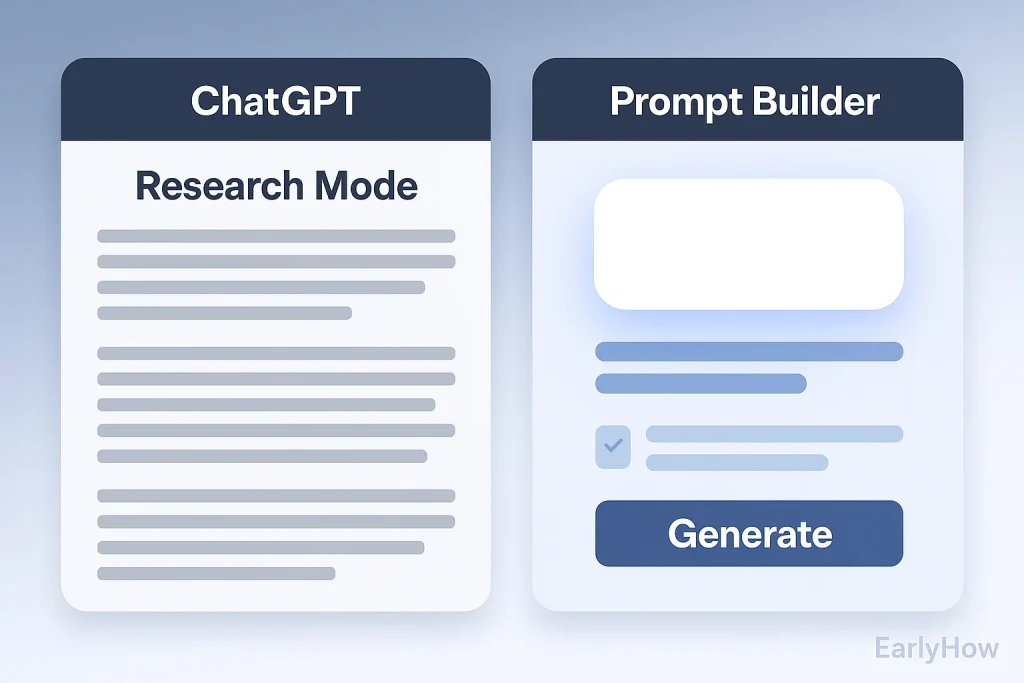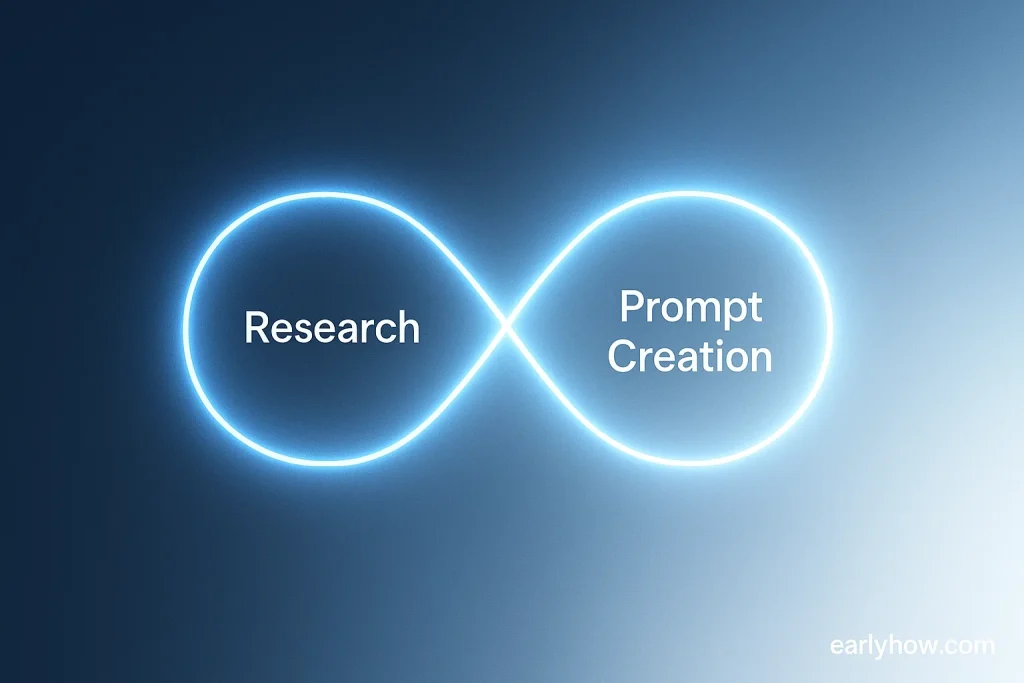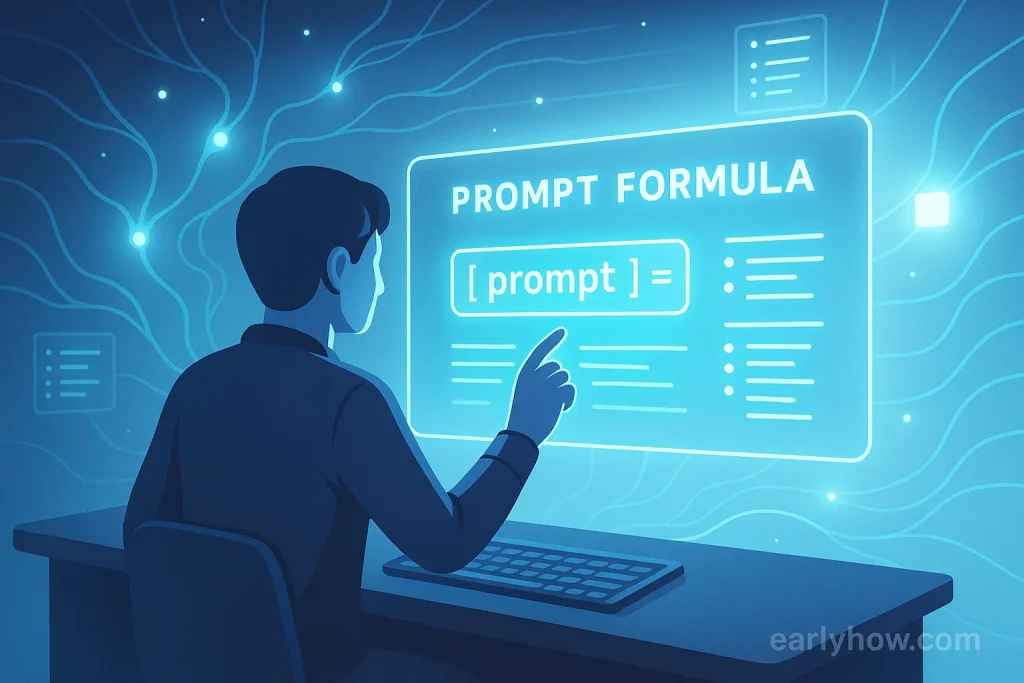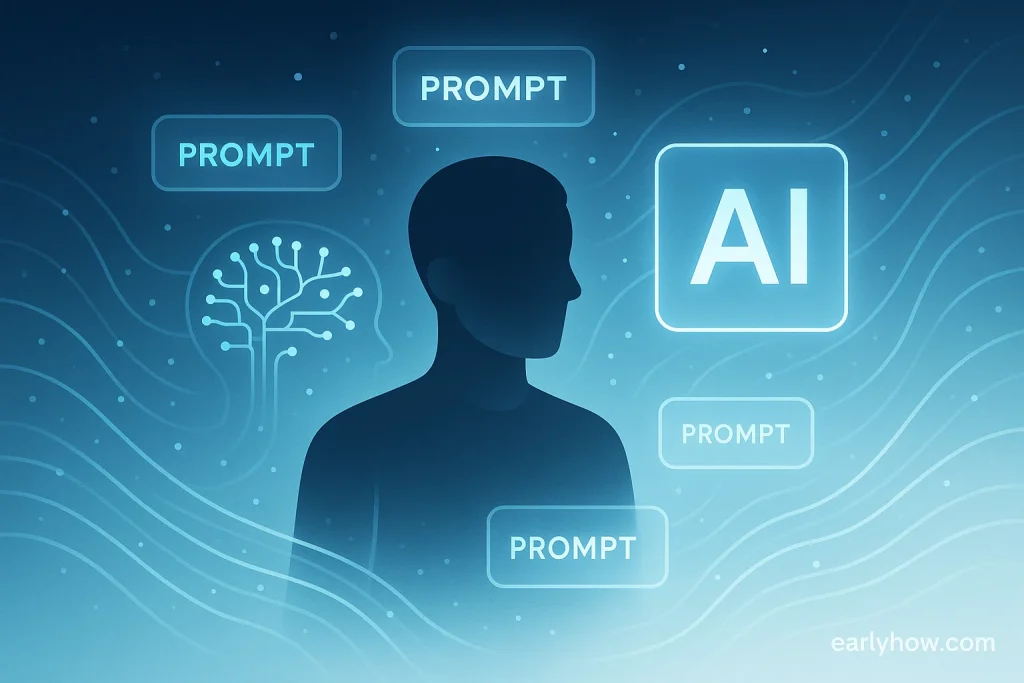If you’ve ever wondered why some ChatGPT users seem to get incredible, human-level responses while others get average results, the reason isn’t luck — it’s method.
Most people rush into prompting, typing whatever comes to mind and hoping for brilliance. But here’s the truth: the secret to perfect prompts isn’t what you type — it’s how you prepare before you type.
This post reveals a two-step formula that guarantees perfect ChatGPT prompts for any task — SEO, content writing, brainstorming, or research.
It’s simple, repeatable, and built to work with every future model.
And once you understand this system, you’ll never prompt blindly again.
Now that you know what we’re about to unlock, let’s move into the first step — researching before you prompt.
Step 1 – Research Before You Prompt
The biggest mistake most users make is starting with an empty chat box.
Instead, start by feeding ChatGPT the knowledge foundation it needs.
Before crafting any prompt, run a deep research query using your most advanced model or web-enabled mode. Ask it to collect current information, frameworks, and trends about your topic.
For example:
“Gather the 2025 best practices for writing SEO-optimized website articles, including ranking strategies, click optimization, and traffic growth.”
This initial query pulls insights from multiple sources, ensuring that your next prompt uses current, data-backed knowledge — not outdated logic.
💡 Pro Tip: Treat this as your pre-prompt. It’s not the final request — it’s your information base.
Once the AI gathers everything (strategies, data, steps), copy that result. You now hold the raw material for your perfect prompt.
And now that your data foundation is ready, let’s see how the second step transforms that research into a master-level prompt.

Step 2 – Build the Meta Prompt
Once you’ve gathered research, it’s time to make ChatGPT write the best prompt for you.
Open a new chat and paste your research using a clear delimiter (like *** or ---) to separate it from your next command.
Then type:
“Using only the following information, generate the best possible ChatGPT prompt I can use to accomplish [goal]. Include all roles, formats, and steps required to produce a high-quality output.”
This is called meta-prompting — a prompt that creates another, stronger prompt based on all the information you’ve already collected.
Why it works:
- ChatGPT now uses up-to-date data (from your research).
- It organizes that data into a structured instruction set.
- The resulting prompt becomes reusable and evergreen.
Essentially, you’ve trained the AI to engineer its own prompt, giving you expert-level precision every single time.
At the end of this process, you’ll receive a complete blueprint — role, tone, output structure, SEO elements, even FAQs or visuals — all customized for your task.
And now that your meta-prompt is ready, let’s see how to apply it to real-world work.
Applying the Secret Method (Example)
Let’s say you want to write SEO articles for your website.
Instead of asking “Write an article about travel in Japan,” you’ll follow the method like this:
- Step 1 (Research):
Ask ChatGPT to gather the latest 2025 SEO trends for travel blogs — including CTR tactics, topical authority rules, and keyword clustering. - Step 2 (Meta Prompt):
Paste that research into a new chat and say: “Using the following information, build me the perfect ChatGPT prompt for writing SEO articles in 2025.”
ChatGPT will produce something like this:
“You are an SEO strategist and travel writer. Write an SEO article for [topic] and [region], including a title tag, meta description, internal links, and FAQs, using a conversational yet authoritative tone.”
You can then fill in the variables and run it anytime you want.
This structure works not just for SEO — but for emails, reports, YouTube scripts, brainstorming, or code generation.
Once you see how efficient this feels, you’ll realize — you’ve just learned how to turn ChatGPT into your own prompt factory.
And since practice strengthens mastery, let’s now explore how to adapt this secret method for different goals.
How to Adapt This Method for Any Task
Here’s how you can apply the same two-step system to various areas:
- Marketing: Research 2025 ad-copy trends, then meta-prompt ChatGPT to create a “Copywriting Formula Prompt.”
- Education: Gather modern teaching methods, then meta-prompt it to design “AI Lesson Creator Prompts.”
- Automation: Research AI workflow tools, then meta-prompt it to generate scripts and Zapier-style automations.
- Design: Collect current UI/UX principles, then meta-prompt for “Design Review Prompts.”
Every time you repeat this pattern, ChatGPT grows more contextually intelligent — because it builds prompts grounded in expert-level knowledge.
This bridges the gap between AI that talks and AI that thinks.
And now that you can apply it universally, let’s explore why this approach outperforms traditional prompting forever.
Why This Method Beats Every Other Prompt Technique
- It uses real-time information.
No guessing or relying on old data. - It creates personalized prompts.
Every output fits your topic, tone, and structure. - It’s reusable and scalable.
One meta-prompt can power a full content or automation system. - It saves editing time.
Your outputs come out complete, structured, and SEO-ready. - It’s model-proof.
No matter how ChatGPT evolves, this method still works — because it’s based on reasoning, not syntax.
When you combine these benefits, you stop using ChatGPT as a tool and start collaborating with it as an intelligent partner.
And since this process is designed to evolve, let’s finish with one more step — transforming it into an automated AI workflow.

Automate the Process
Once you’ve tested this manual process, automate it.
You can build an AI agent or workflow that runs daily to:
- Pick a new keyword or topic.
- Perform deep research automatically.
- Generate a new meta-prompt using that data.
- Produce and publish content or analysis.
With automation, your AI no longer waits for input — it creates it.
That’s when ChatGPT stops being a chatbot and becomes a system that builds systems.
And that brings us to the final takeaway — how to apply this mindset to everything you do with AI.
Final Thoughts
This secret method isn’t magic — it’s logic.
By combining deep research and meta-prompting, you transform ChatGPT from a reactive assistant into a proactive partner.
Every time you use this two-step system, you build smarter prompts, better results, and more consistent performance — across writing, marketing, coding, or creativity.
So before your next project, remember:
Research first. Prompt second. Repeat forever.
And since you’re now equipped with the formula, try it today — start small, refine, and share your results.
Now that you’ve seen how it works, why not explore more prompt strategies in our AI Tools Library?
What’s the first thing you’ll try this two-step method on — writing, automation, or brainstorming?
Share your experience below and we may feature your results in our next EarlyHow post.



